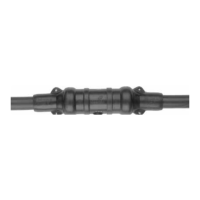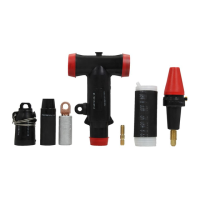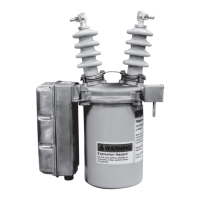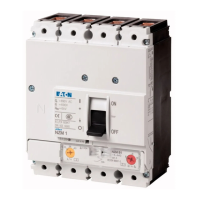2 Installation Instructions MN915001EN June 2016
GridAdvisor Series II smart sensor
Forcing over the air service provision (OTASP)
(Verizon
®
only)
If the cellular provider being utilized with GridAdvisor Series
II smart sensor does not require use of a SIM card as is
case with Verizon
®
CDMA network, the user must initiate
an OTASP (over the air service provision). This specific
action will cause the sensor to actively interrogate the
network for a proper IP address from which the device
was activated. Failure to complete this step will result in
communication failures generally visualized to customer as
simultaneously red blinking LEDs.
1. Ensure that device is powered up and has completed
initialization as indicated by double green blinking LEDs.
2. Reed switch device by placing a strong earth metal
magnet next to the device as indicated by the symbol
“R” found on the rear side corner of the upper housing
opposite of LEDs.
3. Reed switch will initiate Bluetooth
®
discovery mode,
but in order for OTASP to complete the sensor must
not be paired with. After a two minute timeout, the
sensor will connect to network and receive proper IP
address and preferred roaming list.
4. Alternatively, if the device is Bluetooth
®
paired and
connected to ProView NXG software, the sensor will
complete OTASP upon disconnect of ProView NXG
software.
5. OTASP may take up to five (5) minutes, with included
retries, so do not remove battery from device within
this time frame.
6. OTASP results can be confirmed in the sensor’s
communication logs with the ProView NXG software.
ote: N If the OTASP process fails and the sensor blinks red
LEDs continuously, check the communication log for
diagnostics. OTASP can fail if sensor is on roaming
network or has poor signal strength.
Installing battery
1. Remove sensor barrel cap to access battery
compartment. Take care not to lose the gasket located
on inside of cover.
2. Locate battery inside sensor and battery connector on
side wall inside sensor shown in Figure 1.
3. Battery and sensor connectors are keyed to prevent
misalignment. Press connectors together until they
snap into locking position.
4. Device will begin initialization and attempt cellular
activation.
5. Re-tighten cap from 17-22 in-lbs of torque to prevent
any water ingress.
In cases where a torque wrench is not available; tighten
the cap until the gasket inside the cap makes contact
with the battery, turn another 1/2 turn to ensure proper
tightening.
Shelf mode
As an alternative to disconnecting the battery for prolonged
time without a proper charging source, the sensor can be
commanded into “Shelf Mode”. This is accomplished via
an active connection with ProView NXG using the Operate
> Control Operation dialog, or by sending a DNP3 binary
output control command via the SCADA connection to
binary output index 08.
To return the sensor to normal operation from Shelf Mode,
perform a reed switch with a magnetic reset tool. The
device will then initialize in the same manner as when
installing the battery. There is no way to remotely force this
action, so ensure the device initializes before leaving the
site.
WARNING
Leaving sensor activated without proper charging
current source will lead to equipment (battery) damage.
G101.0
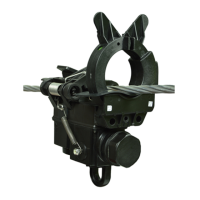
